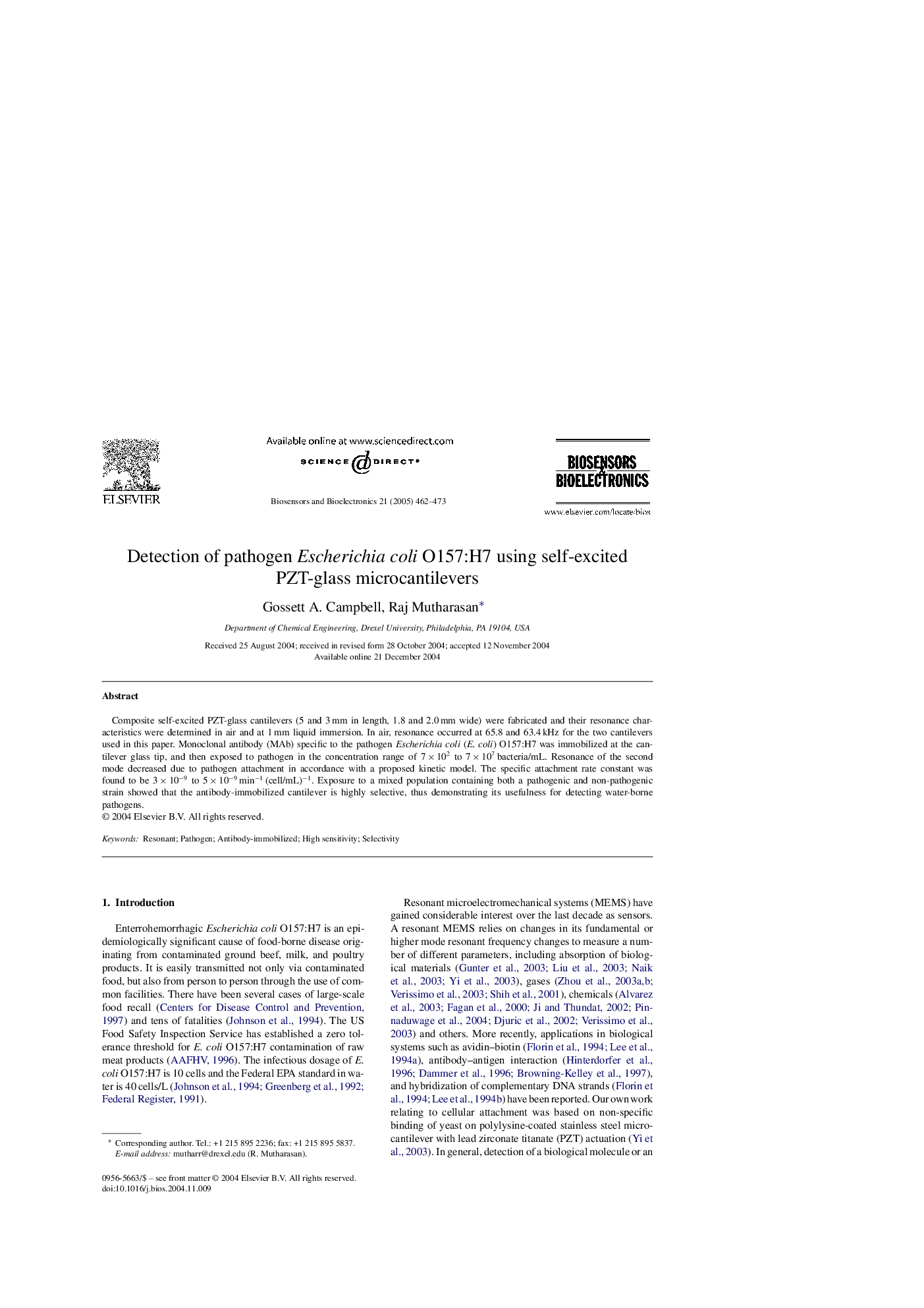| Article ID | Journal | Published Year | Pages | File Type |
|---|---|---|---|---|
| 10429595 | Biosensors and Bioelectronics | 2005 | 12 Pages |
Abstract
Composite self-excited PZT-glass cantilevers (5 and 3Â mm in length, 1.8 and 2.0Â mm wide) were fabricated and their resonance characteristics were determined in air and at 1Â mm liquid immersion. In air, resonance occurred at 65.8 and 63.4Â kHz for the two cantilevers used in this paper. Monoclonal antibody (MAb) specific to the pathogen Escherichia coli (E. coli) O157:H7 was immobilized at the cantilever glass tip, and then exposed to pathogen in the concentration range of 7Â ÃÂ 102 to 7Â ÃÂ 107Â bacteria/mL. Resonance of the second mode decreased due to pathogen attachment in accordance with a proposed kinetic model. The specific attachment rate constant was found to be 3Â ÃÂ 10â9 to 5Â ÃÂ 10â9Â minâ1Â (cell/mL)â1. Exposure to a mixed population containing both a pathogenic and non-pathogenic strain showed that the antibody-immobilized cantilever is highly selective, thus demonstrating its usefulness for detecting water-borne pathogens.
Related Topics
Physical Sciences and Engineering
Chemistry
Analytical Chemistry
Authors
Gossett A. Campbell, Raj Mutharasan,
